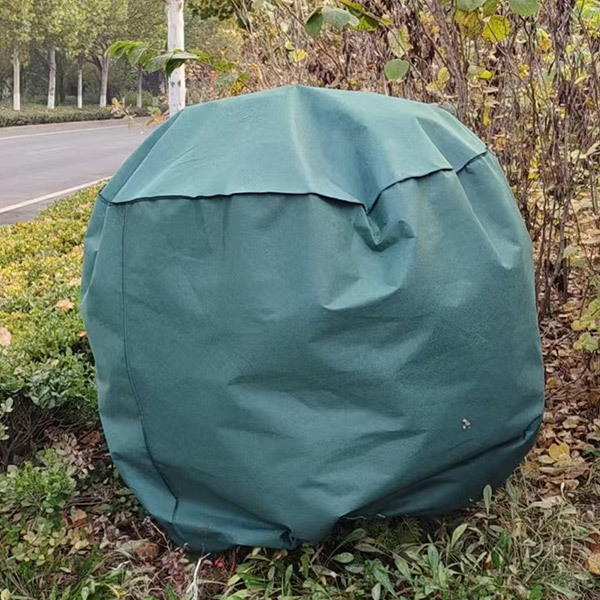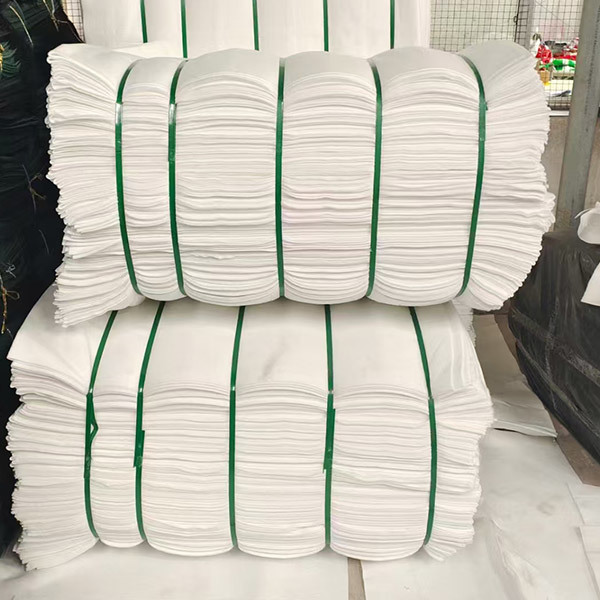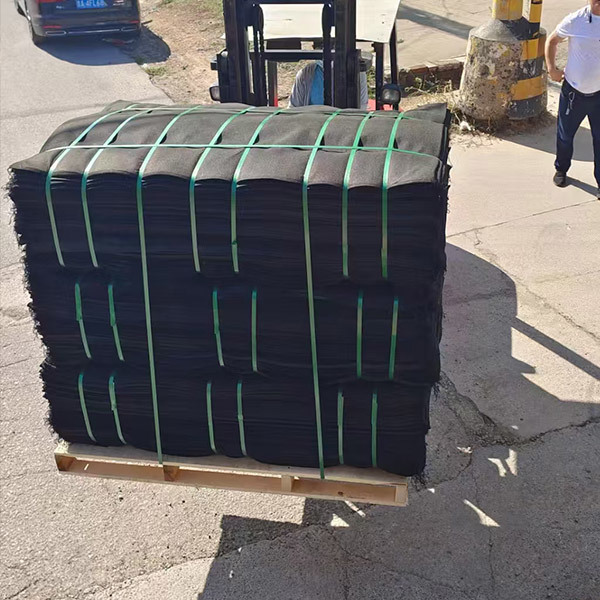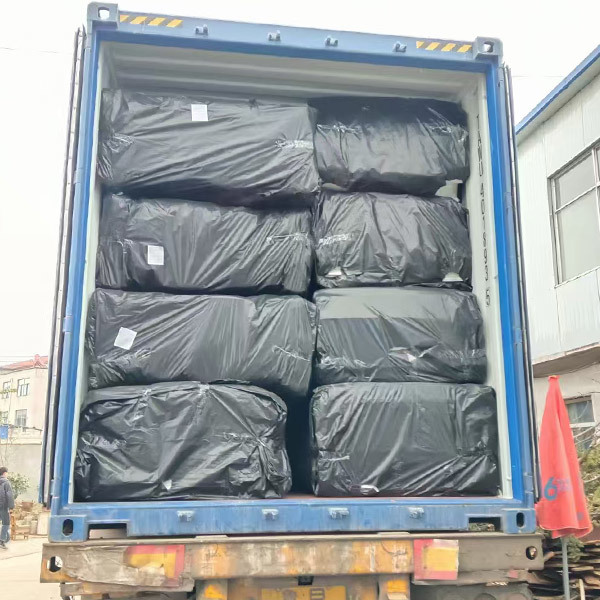Ecological Bag
- Commodity name: Ecological Bag


Keyword:
Ecological Bag
- PRODUCT DESCRIPTION
Eco-bag is made of double-sided ironing needle-punched non-woven fabric made of polypropylene (PP) or polyester fiber (PET). The thickness, unit mass, physical and mechanical properties, shape, fiber type, force mode, direction, geometric size and water permeability of the anti-ultraviolet ecological bag have been strictly screened, and the equivalent pore size to meet the needs of plant growth has been strictly screened, which has the characteristics of anti-ultraviolet (UV), anti-aging, non-toxic, non-combustion, and non-extension of cracks, and truly achieves zero pollution. It is mainly used in the construction of flexible ecological slopes. Ecological bag slope protection and greening is one of the important construction methods in barren mountains, mine restoration, highway slope greening, riverbank slope protection, and inland river remediation.
Eco-bag has excellent physical and chemical properties, this specially formulated material can resist the erosion of ultraviolet rays, is not affected by chemicals in the soil, will not undergo qualitative change or decay, is permanently non-degradable and can resist the erosion of insect pests, anti-aging, non-toxic, resistant to acid and alkali salt erosion and microbial decomposition, only permeable to water and impervious to soil, plant-friendly and can be vegetated and greened; As the latest slope component material, it has the following environmental universal advantages:
Features
Resistant to moisture
The raw materials of the ecological bag do not absorb water, and the bag will not be damaged when moisture appears, and the bag will not be deformed and insoluble in polluting liquids (EPA Method 9090 United States Environment Agency).
Chemical Resistance (PH)
Extensive research and testing have shown that eco-bags are highly resistant to certain concentrations of acid-base chemicals and can be used in most solid and heavily contaminated sites.
Resistant to biodegradation and animal destruction
The eco-bag is made of special formula materials, which do not support, absorb, or help fungi grow, and do not rot, mold, or deteriorate. Eco bags will not be digested by insects and related animals, and will not become food for gnawing animals (rats), termites, borers, beetles, whitebait moths, etc.
Anti-violet polymer
Eco bags can withstand high temperatures of 150 degrees Celsius without melting, and can withstand the lowest temperature of -40 degrees Celsius.
Ultraviolet (UV) resistant
Eco bags contain carbon inks and other anti-UV components.
Features & Benefits:
In slope engineering, this new material can completely replace stone, cement and other materials, which can greatly reduce the project cost. The slope after construction has a surface that can be covered with vegetation, so that the excavated slope surface can achieve the effect of greening and form a natural ecological slope. It has the function of permeable and impermeable filtration, so that the slope formed has a high degree of permeability, has a strong protective and stabilizing effect on soil loss, local mud (soil) and rock flow, slope collapse, etc., and can become a permanent high-stability natural slope.
Fields of application
Ecological restoration
1. River Banks: Natural riparian environments where humans and wildlife coexist
2. Mine regreening: comprehensive utilization of mine gangue, scientific remediation of subsidence areas, greening barren mountains, purifying water and gas, creating a new era of mine ecological restoration and barren mountain regreening.
3. Sea-lake shores, surface landslide control, culvert mouths, drainage ditches, soil erosion, irrigation systems, etc.
4. Constructed wetlands: ecological restoration
5, Green roofs
Infrastructure
1. Road slope protection: railway and highway slope protection, suitable for cut slope and fill slope.
2. River and lake slope protection: suitable for river, lake and reservoir slope.
3. Special applications: military facilities and flood control emergencies, bunkers, flood control levees, etc.
Landscaping & Residential
1. Vertical greening, garden art;
2. Commercial and residential communities;
3. Roof garden-style greening.
Specifications
Size range: 400mm× 800mm, 430mm× 810mm, 500mm×900mm, etc.
Fabric color: green, black, white
Cloth weight range: a wide range, common 150g---1000g, etc
The formula for calculating the volume of eco-bag soil after molding:
Length = length of eco bag - (12~15) cm,
Width = width of the eco bag * 0.7
Height = height of eco bag * 0.4
For example, the approximate size of a bag with an outer diameter of 810mm*430mm is 65cm in length, 30cm in width, and 15cm in height after loading soil (the specifications of the ecological bag and the molding specifications after filling the soil can be designed according to the actual requirements.) The maximum permissible deviation is 2%)
Indicator references
There is no national and industry standard for ecological bags in China, and the technical parameters refer to the national standard GB/T 17639-2008 for geosynthetics filament spunbond needle-punched nonwoven geotextiles of the People's Republic of China.
History
Eco bags are made of double-sided sintered needle-punched non-woven fabrics made of polypropylene (PP) or polyester fibers (PET). The best material, polypropylene, was developed by United States A.J. Teller in 1954 and sold as a commodity in 1957. In 1958, polypropylene was applied to vegetation slope protection technology in Canada, and the synthetic material engineering of system components was completed, becoming an ecological bag. Since then, ecological bags have been widely used in Japan after World War II with their excellent physical and chemical properties, and have achieved great success in vegetation slope protection.
Production requirements
Under the premise of fully considering the requirements of many disciplines such as material mechanics, hydraulics, biology, botany, etc., the thickness, unit mass, physical and mechanical properties, shape, fiber type, force mode, direction, geometric size and water permeability of the ecological bag and the equivalent pore size to meet the growth of plants are strictly screened, which has the characteristics of anti-ultraviolet (UV), anti-aging, non-toxic, non-combustion, and non-extension of cracks, and truly achieves zero pollution.
The eco-bag has a targeted permeable and impermeable filtration function, which can not only prevent the loss of filler (soil and nutrient mixture), but also realize the normal exchange of water in the soil, and the water required for plant growth has been effectively maintained and replenished in time, which is very friendly to plants, so that plants can grow freely through the bag. The root system enters the soil of the foundation of the project, such as countless anchor rods to complete the re-stabilization between the bag body and the main body, the longer the time, the more firm, and further realizes the purpose of building a stable permanent slope, and greatly reduces the maintenance cost.
The functional design of the ecological bag with special functional requirements is a necessary condition for the stability of the flexible slope structure
Illustrated by equivalent aperture evidence:
First,the aperture is too large (the bag body, the material is too thin)
A. When the quality of the bagged material is washed by rain and flowing water, a large amount of loss will be lost, resulting in a great reduction in the unit weight, a huge change in the mechanical design value of the plateau, and the destruction of the mechanical structure.
B. The bagged contents are easily lost under water erosion, and the settlement range greatly exceeds its natural settlement range, which does not match the design scheme of the hill, resulting in collapse.
Second, the aperture is too small (the bag material is too thick)
A. It will hinder the growth of vegetation and root extension, and seriously affect the structural stability of flexible slope.
B. Under a certain specification, the weight of the bag is a fixed value in the design of the mechanical structure of the flexible slope, and the aperture is too small, which reduces its permeability. When a large amount of water penetrates, its unit weight is greatly enhanced. The value of the stressed structure of the plateau increases, resulting in the deformation and collapse of the structure.
C. The hydrostatic pressure of the slope will collapse due to the increase of the hydrostatic pressure of the slope.
Factory appearance
Shandong Xinying New Materials Co., Ltd. will be strong economic and technical strength, excellent product quality, casting China geo building materials new brand new image.

Get A Quote
Note: Please leave your email address, our professionals will contact you as soon as possible!
Related Products







